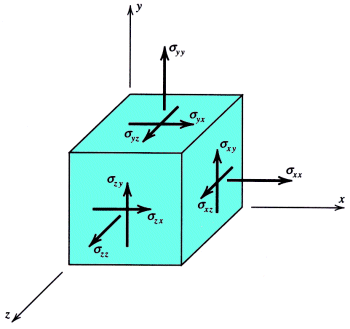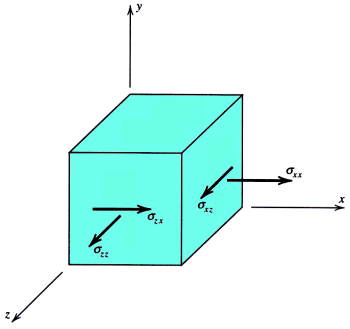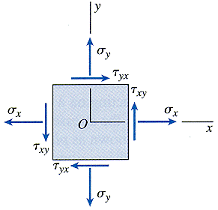| Augustin Louis Cauchy [kō-shē, 1789-1857]…applies the notion of pressure on a plane (a concept which was familiar to him from hydrodynamics) and assumes that this pressure is no longer normal to the plane upon which it acts in an elastic body. … The total stress on an infinitesimal element of a plane taken within a deformed elastic body is defined as the resultant of all the actions of the molecules situated on one side of the plane upon the molecules on the other, the directions of which (actions) intersect the element under consideration. By dividing the total force by the area of the element, the magnitude of stress is obtained. -- Timoshenko, S. P. (1983), History of strength of materials. McGraw-Hill. |
stress elements
a cubic volume element of material that represents the state of stress acting at that point in the body
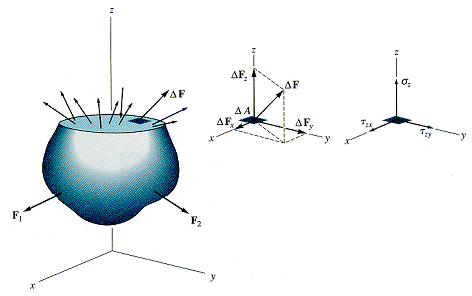
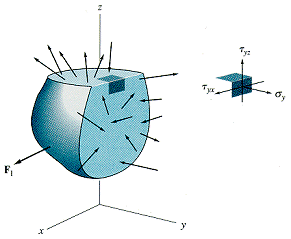
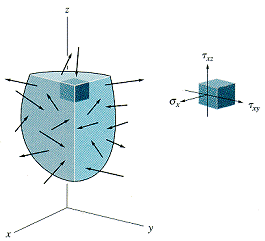
There is only one state of stress at a point, regardless of the orientation of the element being used. When we have two elements with different orientations at the same point in the body, the stresses acting on the faces of the two elements are different, but they still represent the same state of stress. This is similar to representing a force vector by its components in different coordinate systems -- the components change, but the force stays the same regardless of axis orientation.
general state of stress at a point
characterized by six independent normal and shear stress components
plane stress
a special case where the stress state can be analyzed in a single plane (e.g., on the surface of an object) (commonly used)
